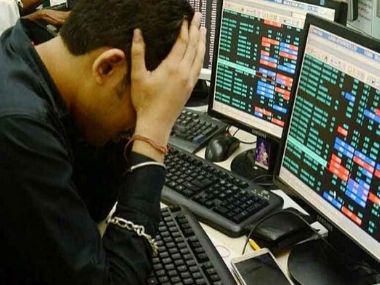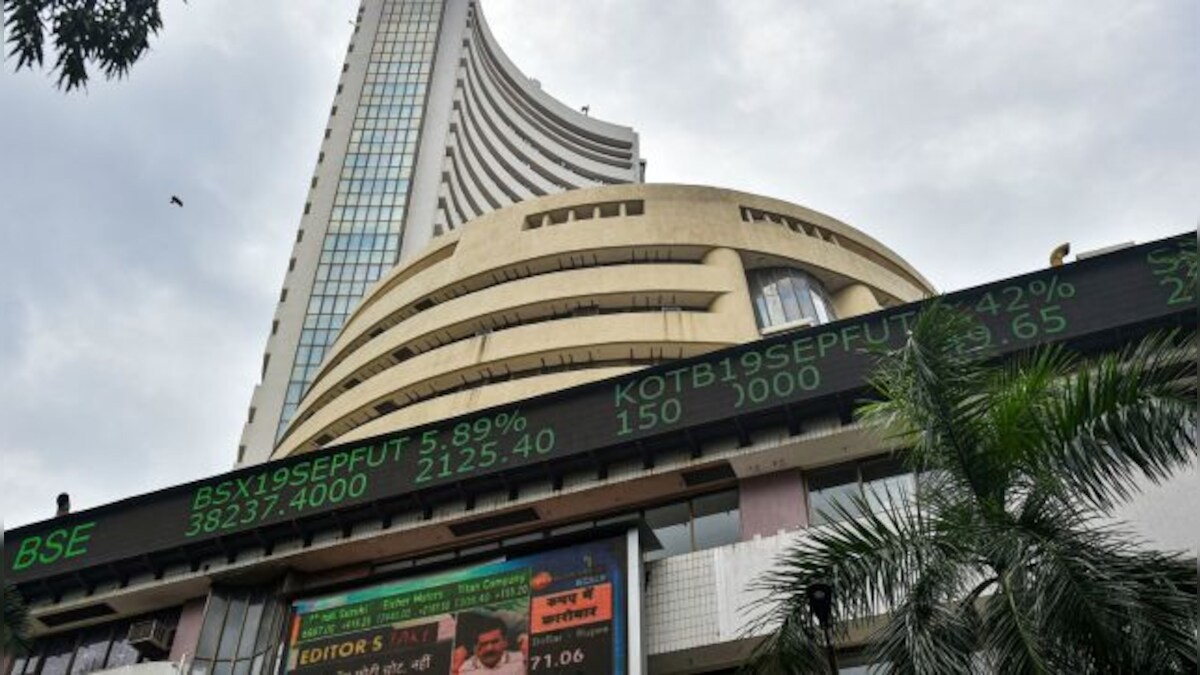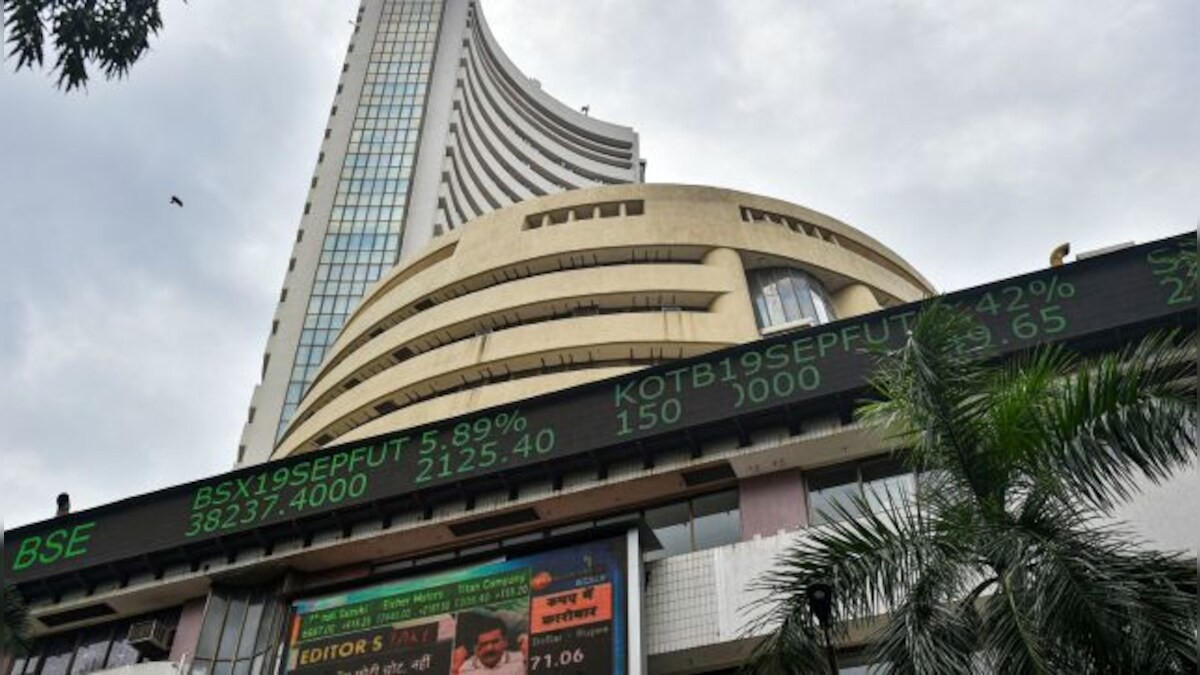Continuing its free-fall, the equity benchmark indices floundered during early hours on Thursday with eroding investor confidence due to worries about the economic impact of coronavirus pandemic.
The Sensex was down 1,755.52 points or 6.08 percent at 27113.99 at around 9 AM and the Nifty down 521.25 points or 6.15 percent at 7947.55.
#MarketSlump | #Sensex & #Nifty hit fresh 3-year lows, Midcap Index at a 4-year low. #Rupee approaches 75/$, trades at record low pic.twitter.com/QxwnYcDs3q
— CNBC-TV18 (@CNBCTV18Live) March 19, 2020
At one time, the Sensex breached 27,000-mark for the first time since 11 January 2017 in the morning trade. Nifty also breached 7,900 level for the 1st time since 26 December 2016. Bajaj Finance was the top loser which tanked over 13 percent in the Sensex pack. Other losers included Asian Paints, Mahindra and Mahindra, Maruti, ICICI Bank, Axis Bank, HDFC Bank, ONGC, Reliance Industries.
All sectoral indices at the National Stock Exchange (NSE) were in the negative terrain with Nifty private bank down by 8.2 percent, financial service by 8 percent, realty by 7 percent and auto by 6.5 percent.
Yes Bank, which jumped nearly 50 percent on Wednesday, plunged 22.20 percent to Rs 47.30 in the morning trade on Thursday. On Wednesday, the Yes Bank stock jumped 49.95 percent to Rs 87.95 on the BSE.
On the NSE, it zoomed 48.84 percent to Rs 87.30. In four days, the scrip has risen a whopping 251 percent. Among stocks, Bharti Infratel dropped by 15.1 percent to Rs 127.15 per share while IndusInd Bank and Kotak Mahindra Bank traded lower by 12.4 percent and 9.1 percent respectively. Yes Bank was down by 13.65 percent, a day after resuming complete services which were stopped as the Reserve Bank of India (RBI) placed it under moratorium earlier this month.
Bajaj Finance lost by 14.4 percent and Bajaj Finserv by 10.4 percent. The other prominent losers were ONGC, Bharat Petroleum Corporation, HCL Technologies and Asian Paints. However, Power Grid Corporation and NTPC witnessed marginal gains.
Rupee hits record low of 75 per dollar
The Indian rupee continued to fall, touching an all-time low of 75 against the US dollar in the morning trade. It had opened at 74.95 per dollar compared with the previous close of 74.26.
Asia-Pacific shares outside Japan falls to 4-year low
The dollar surged and everything else was blown away on Thursday as emergency central bank measures in Europe, the United States and Australia failed to halt a fresh wave of panic selling. “There’s no buyers, there’s not much liquidity and everyone is just getting out,” said Chris Weston, head of research at Melbourne brokerage Pepperstone.
Stocks, bonds, gold and commodities fell as the world struggles to contain coronavirus and investors and businesses scramble for hard cash. US stock futures were a hair’s breadth from hitting session down limits. The growth-sensitive Australian dollar was crushed 4 percent to a more than 17-year low. Nearly every stock market in Asia was down and circuit breakers were hit in Seoul, Jakarta and Manila.
Traders reported huge strains in bond markets as distressed funds sold any liquid asset to cover losses in stocks and redemptions from investors. Benchmark 10-year sovereign bond yields in Australia, New Zealand, Malaysia, Korea and Singapore and Thailand surged as prices tumbled. Gold fell 1 percent and copper hit its downlimit in Shanghai. MSCI’s broadest index of Asia-Pacific shares outside Japan fell 5 percent to a four-year low, with Korea and Hong Kong leading losses. The Nikkei fell nearly 1 percent, the 200 nearly 3 percent, while the Kospi lost 8 percent and the Hang Seng 5 percent.
“We’re in this phase where investors are just looking to liquidate their positions,” said Prashant Newnaha, senior interest rate strategist at TD Securities in Singapore.
Meanwhile, the virus outbreak has worsened. Italy on Wednesday reported the largest single-day death toll increase from coronavirus since the outbreak began in China in late 2019. It has killed more than almost 9,000 people globally, infected more than 218,000 and prompted emergency lockdowns on a scale not seen in living memory.
JP Morgan economists forecast the US economy to shrink 14 percent in the next quarter, and the Chinese economy to drop more than 40 percent in the current one, one of the most dire calls yet as to the scale of the fallout. “There is no longer doubt that the longest global expansion on record will end this quarter,” they said in a note. “The key outlook issue now is gauging the depth and the duration of the 2020 recession.” Investors will be parsing US weekly jobless figures due at 1230 GMT, and in the weeks to come to gauge the depth of layoffs.
US stocks deepen selloff, Dow erases gains
US stocks deepened their selloff on Wednesday and the Dow erased virtually the last of its gains since President Donald Trump’s 2017 inauguration, as the widening repercussions of the coronavirus pandemic threatened to cripple economic activity. The benchmark S&P 500 index ended down 5.2 percent, though it pared losses late in the day as the US Senate passed legislation to provide billions of dollars to limit the damage from the outbreak through free coronavirus testing, paid sick leave and expanded safety-net spending.
In a move likely to add to the anxiety, the Intercontinental Exchange Inc, owner of the New York Stock Exchange, said after the bell that the NYSE will temporarily close its trading floors and move fully to electronic trading beginning Monday. The NYSE said a floor trader and an NYSE employee had tested positive for the coronavirus, but that they had not entered the stock exchange building. Trading and regulatory oversight of all NYSE-listed securities will continue without interruption, the exchange said.
With airports and hotels emptying and airlines asking staff to take unpaid leave to stem losses, the S&P 1500 airlines index sank 20.8 percent on Wednesday. Shares in major hotel operators Hilton, Marriott and Hyatt fell by about 12 percent to 19 percent.
“The market’s really reacting to fear and uncertainty and we don’t think it’s over until it finds a floor on stock prices. The floor will have to be found in containment of the viral spread and limiting the economic toll of the virus,” said Nela Richardson, investment strategist at Edward Jones. By Wednesday’s close, the Dow was up just 0.4 percent from where it was on 20 January 2017, the day of Trump’s inauguration, although it remains up almost 9 percent from when Trump unexpectedly won the presidential election on 8 November 2016, often referred to as the “Trump Bump.”
The S&P 500 is now down about 29 percent from the record closing high it notched on 19 February, as the coronavirus-inspired selloff ended Wall Street’s longest-ever bull run. In one of the most dire forecasts yet issued for the potential hit from the epidemic, a JP Morgan economist said the US economy could shrink 4 percent this quarter and 14 percent next quarter, and for the year it is likely to shrink 1.5 percent.
The Dow Jones Industrial Average 1,338.46 points, or 6.3 percent, to 19,898.92, the S&P 500 lost 131.09 points, or 5.18%, to 2,398.1, and the Nasdaq Composite dropped 344.94 points, or 4.7 percent, to 6,989.84.
Sell everything
The selloff followed an attempt at stabilizing in morning trade, with an ECB pledge to buy 750 billion euro ($820 billion) in bonds through 2020 offering some support.
In the afternoon the US Federal Reserve promised a liquidity facility for money market mutual funds.
The Reserve Bank of Australia also cut interest rates to a record-low 0.25 percent and announced an historic foray into quantitative easing after at an out-of-cycle meeting.
But as with previous massive stimulus measures already announced by central banks around the world, it offered little salve to dire sentiment.
“This is about the impact on demand and the disruption of global supply chain…it is not speaking directly to the key problem for markets,” said Michael McCarthy, chief market strategist at brokerage CMC Markets in Sydney.
In currency markets, everything except the dollar and the euro collapsed. Sterling fell 1 percent to $1.1490. The yen fell 1 percent to 109.16 per dollar. The New Zealand and Australian dollars each fell more than 4 percent.
US 10-year Treasuries, usually a haven in times of turmoil, rose through the session, following their steepest two-day selloff in nearly 20 years on Tuesday and Wednesday.
Oil steadied after an overnight plunge to an 18-year low in Asian trade, with US crude last up 6.5 percent to $21.70 and Brent up 34 cents to $25.22.
“I’d say the market is uninvestable at this point,” said Daniel Cuthbertson, managing director at Value Point Asset Management in Sydney. “Until we get a containment of global contractions, the market is just going to be directionless.”
--With inputs from agencies


)




)
)
)
)
)
)
)
)